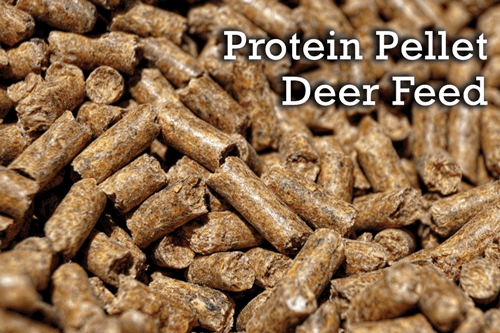

Feedy greedy deer food how to#
Read Next: How to Plant the Perfect Half-Acre Food Plot for Whitetail Deer Best Late-Season Deer Food #5: Brassicas Brassicas are a near-perfect late-season food plot choice. On the flip side, beans can get buried in deep snow so when the flakes fall heavily and there are easier food sources around, deer might ignore them. This makes it easy for deer to inhale a pile of them with very little effort, and winter whitetails are all about efficiency when it comes to eating. In addition to being high in protein, soybeans grow relatively low to the ground and are lightly attached to the stalk. If I were forced to pick only one ag-species row-crop to plant in a food plot, it would be soybeans. Best Late-Season Deer Food #4: Soybeans Soybeans are one of the best late-season food plot plants you can grow.

While deer often ignore these tart little treats in early fall, they will devour them during the late season. The trails beaten to those late-bearing trees were always impressive. I hunted a farm for many years with a small orchard, and there were half a dozen trees that held apples well into winter. natalia_ch via Deposit PhotoĪpples are another mast crop most hunters associate with early fall, but they can be a huge draw in the post-rut. Best Late-Season Deer Food #3: Apples Leftover apples on the ground. Farmers are often more than happy to let me hunt crop-raiding deer, especially if I’m willing to take a doe or two. I’ve gotten permission to hunt previously inaccessible farms because I’ve asked to hunt winter deer digging up new alfalfa. Alfalfa is extremely high in protein, and a fresh field must still maintain its flavor because deer devour the stuff. This was one of my early-season picks, but I’m including it here too because I’ve seen December deer ignore corn and soybeans to dig through a foot of snow and feed in a newly seeded alfalfa field. Best Late-Season Deer Food #2: Newly Seeded Alfalfa You may see a rub or two nearby, as well, confirming that a buck or two are among the deer visiting the area. If there’s snow, the mission is simplified further, with the added benefit of trails that indicate how deer are approaching the acorn buffet. Basically, if you’re not saying, “Wow, deer are hammering this spot!” you should probably move on. Identifying which oak flats or individual trees deer are hitting hardest is usually a piece of cake this time of year, too, as you’ll spot lots of obvious feeding sign, with leaves churned up and pawed at. Oaks are easy to spot this time of year, as their brown leaves are often the only foliage still clinging to the otherwise bare trees. Spend a couple midday hours looking for stands of tall, mature red oaks, especially on ridge tops. Instead, concentrate on red oaks, which frequently throw a bigger crop that can last through winter and into the following spring. Don’t expect to find many white-oak acorns now, though. But unless you hunt where oaks are rare, or the crop was particularly poor, there are still plenty of nuts around. They’ve been dropping since the beginning of fall, causing many hunters to think the show is over. If I had to nominate a most-overlooked winter deer food it would be the acorn. How to Hunt the Best Late-Season Food Sourcesīest Late-Season Deer Food #1: Acorns In most areas, there are still plenty of red oak acorns on the ground for deer to feed on.How to Scout the Best Late-Season Deer Foods.Related: The Best Food Plots for Deer 2022 Table of Contents With that in mind, here are the nine whitetail foods that are most likely to put you onto a great late-season buck (in no particular order). It’s so important now that it’s more than worth your while to give up a day or two of hunting to pinpoint exactly where deer are feeding. So success in the late season is truly as straightforward as this: Find the best deer food and you’ll find the deer. As winter settles in, even mature bucks go on a feeding binge like no other time of year. This makes late-season whitetail hunting relatively simple. But this is all happening at, or around, the best deer feed in the area, whether that’s big-woods browse or mast, ag fields, or the best late-season food plots. Sure there’s some secondary breeding happening, and bucks are still banging antlers and posturing to prove who’s boss. During the rut, grabbing a bite to eat was an afterthought for bucks, but right now and in the weeks to come, choosing a prime food source is key to their survival.

Keeping tabs on the best deer food is important throughout the fall, but in the late season, it’s pretty much the entire ball game.


 0 kommentar(er)
0 kommentar(er)
